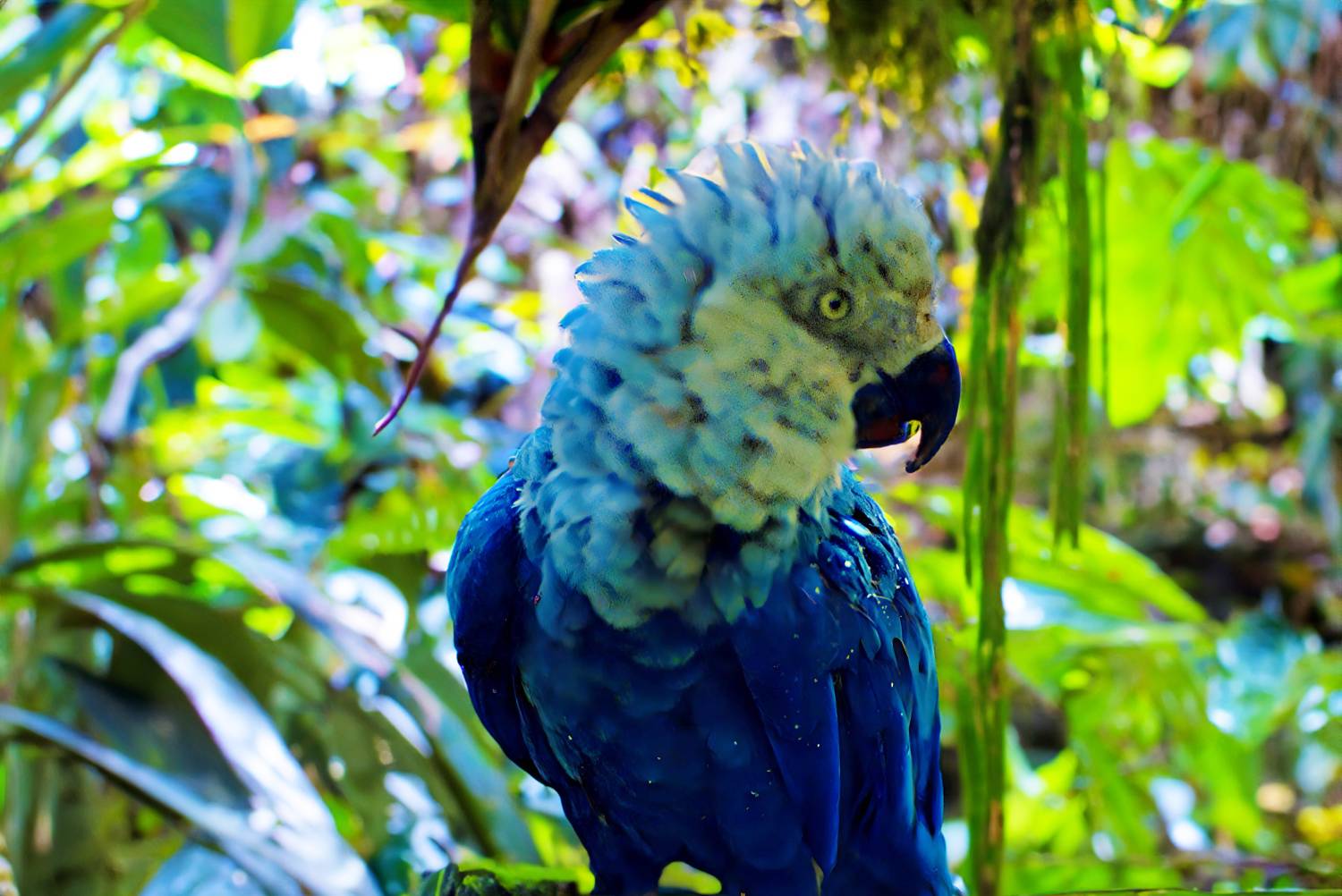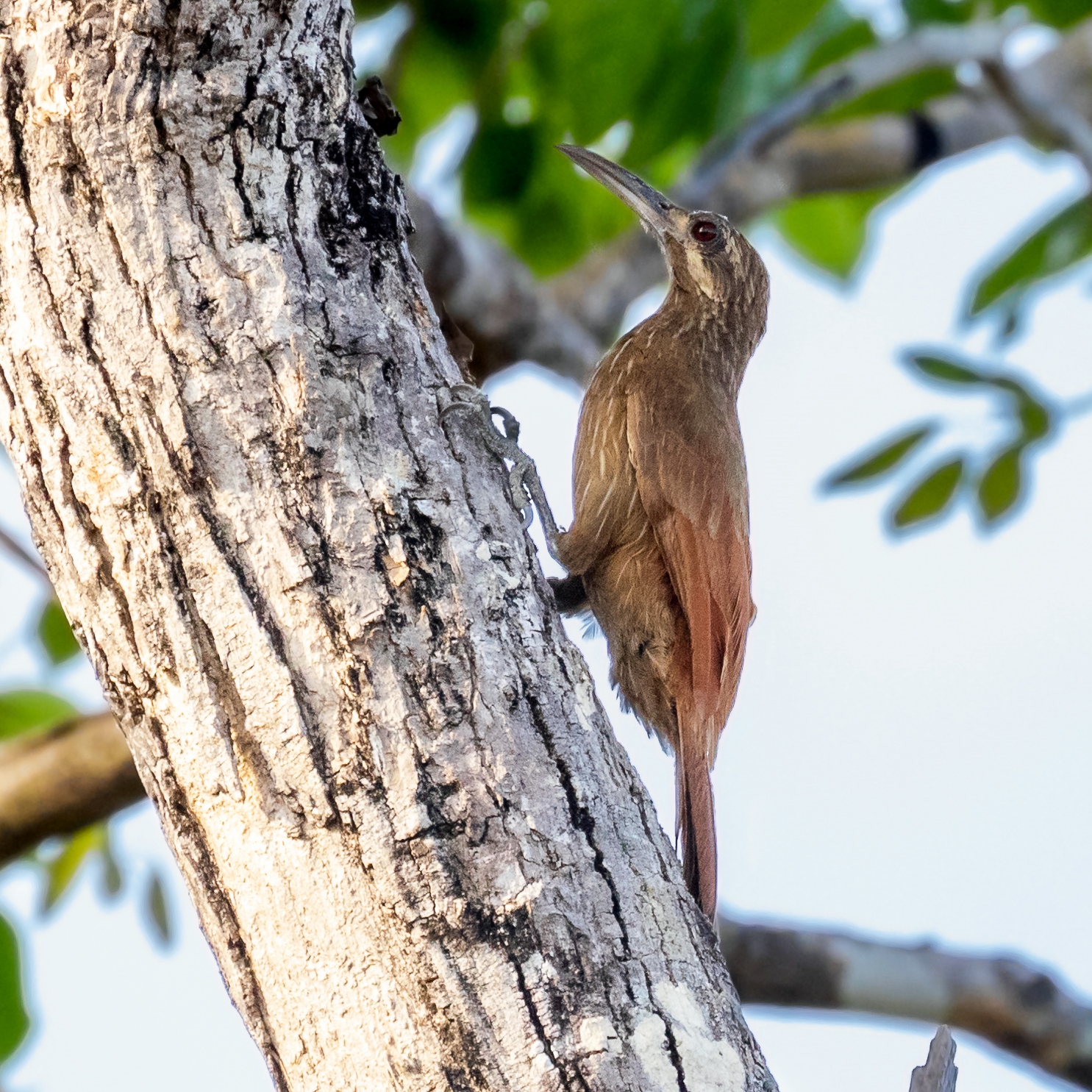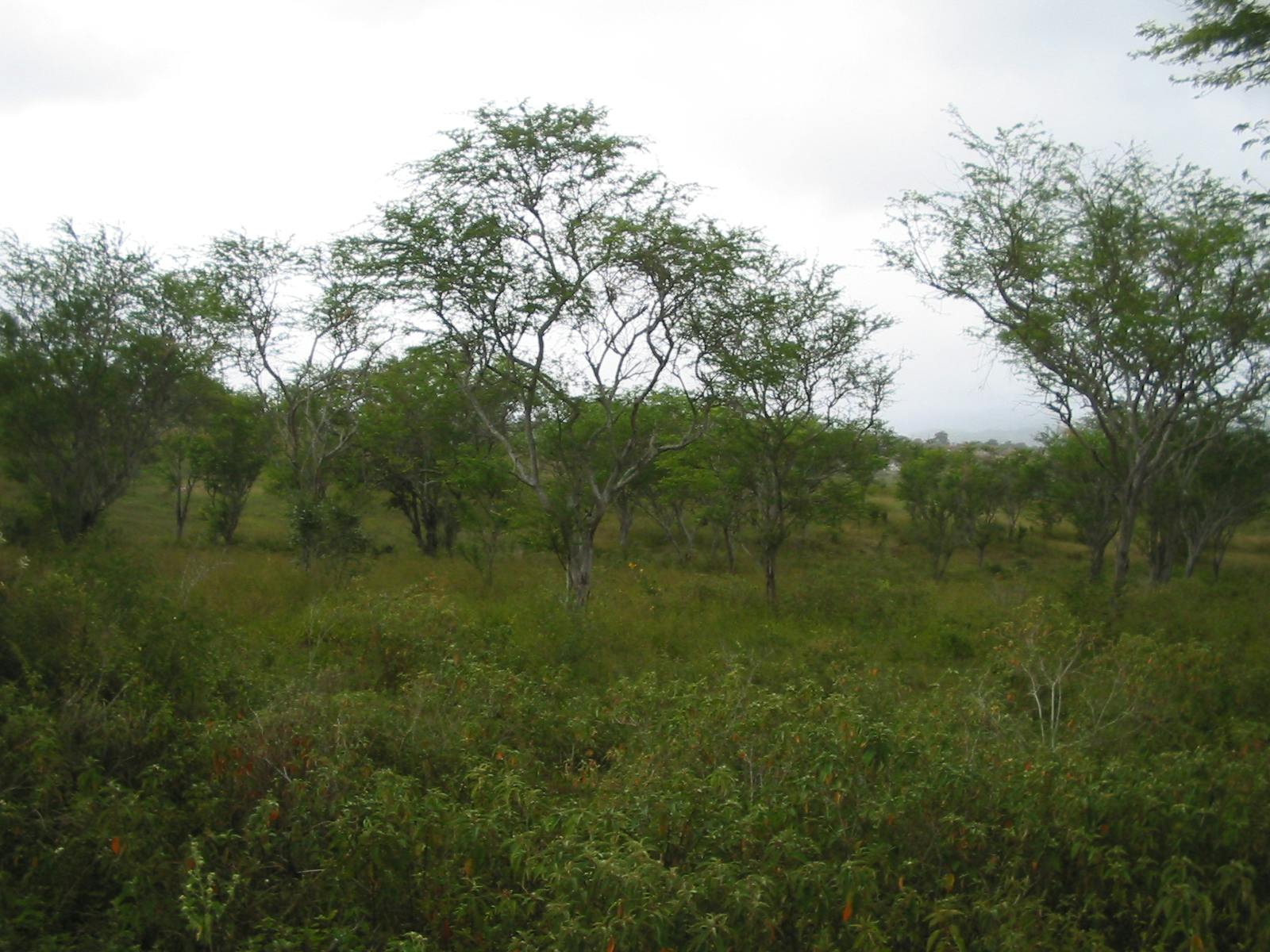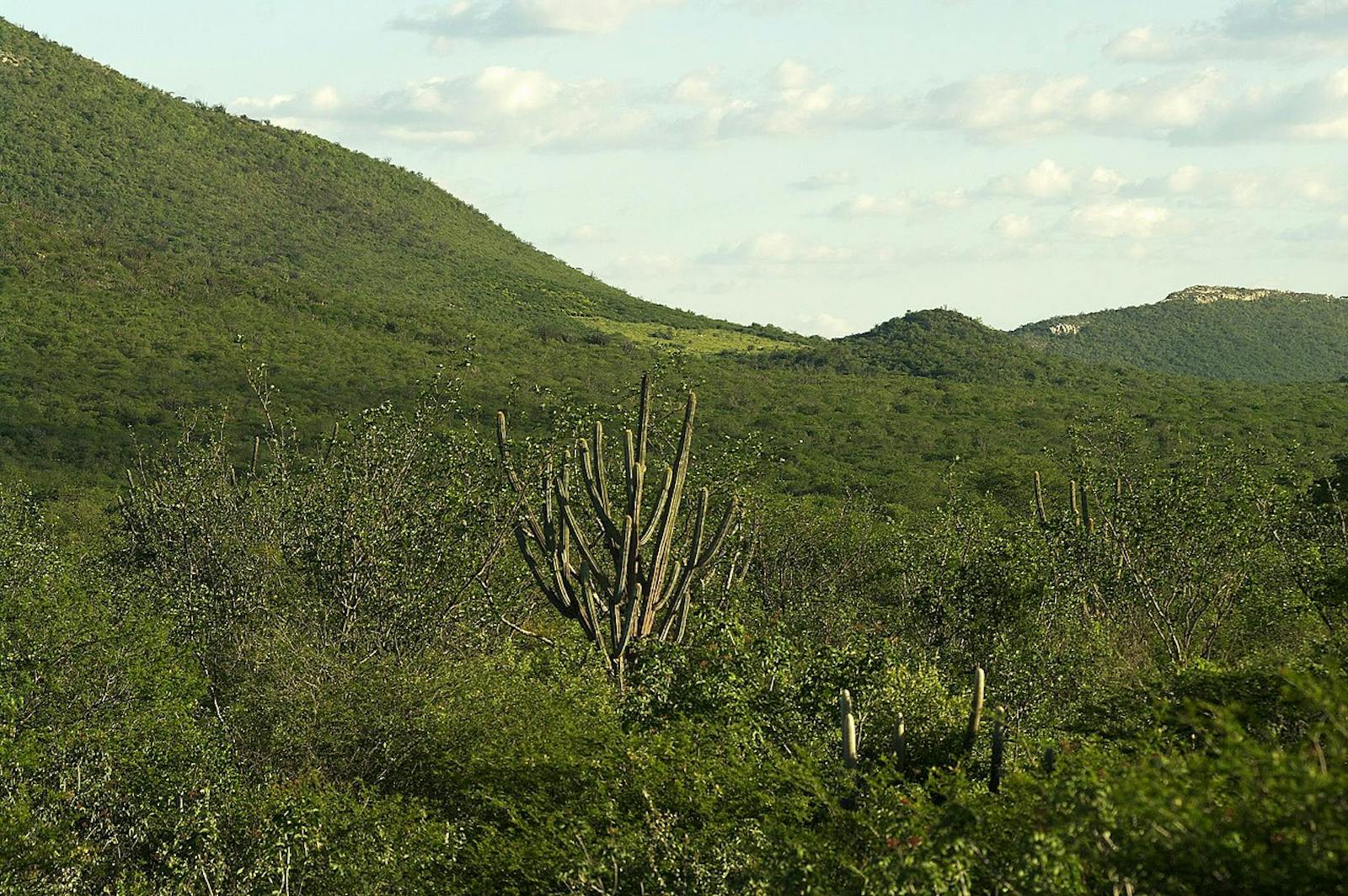Caatinga
The ecoregion’s land area is provided in units of 1,000 hectares. The conservation target is the Global Safety Net (GSN1) area for the given ecoregion. The protection level indicates the percentage of the GSN goal that is currently protected on a scale of 0-10. N/A means data is not available at this time.
Bioregion: Brazilian Atlantic Dry Forests (NT15)
Realm: Southern America
Subrealm: Brazil Cerrado & Atlantic Coast
Ecoregion Size (1000 ha):
73,600
Ecoregion ID:
525
Conservation Target:
7%
Protection Level:
8
States: Brazil
Native to the Caatinga ecoregion, the Spix’s macaw, or the little blue macaw, is a movie star from the animated film ‘Rio’ and has become a global conservation icon. This distinctive large blue parrot relies heavily on caraiba trees for nesting cavities, seeds, and fruit.
Although the species is recently considered to be extinct in the wild, several captive breeding programs are planning their reintroductions into the dry forest habitats. With any luck, the large blue macaws will fly again over the Caatinga, spreading seeds of carnauba trees as they soar over the forest canopy.

The flagship species of the Caatinga ecoregion is the Spix’s macaw (Cyanopsitta spixii). Image credit: CC by SA 2.0, 71 Spix-Ara | Rüdiger Stehn from Kiel, Deutschland
Encompassing the drier part of northeastern Brazil, Caatinga is the largest dry forest region in South America and one of the richest dry forests in the world. Its complex borders with Cerrado, Atlantic forest, and Amazon have allowed a considerable biotic interchange among these regions. In general, Caatinga is located on crystalline or sedimentary depressions, whose continuity is broken by isolated plateaus.
Caatinga vegetation is so heterogeneous and diverse that there is not one single type of caatinga vegetation, but rather several distinctive caatingas. Caatinga types range from low shrubby caatinga (up to 1 meter or 3.28 feet tall) associated with shallow sandy soils and a level or gently undulating surface to tall caatinga forest (up to 25 to 30 meters or 98 feet tall) associated with eutrophic soils derived from basic rocks.
The climate of this ecoregion is hot and dry, with 6 to 11 dry months. The average annual rainfall varies between 250 and 1,000 mm, and the average annual temperature is between 24 and 26 degrees Celcius.
Caatinga is an important area of endemism for different groups of organisms, harboring a unique biota with thousands of endemic species. The biodiversity of Caatinga is made up of at least 1,200 species of vascular plants, at least 185 fish species, 44 lizards, nine amphibians, 47 snakes, four turtles, three crocodiles, 49 amphibians, 350 birds, and 80 mammals. Up to 30% of the vascular plants are endemic to the ecoregion, as are 10 percent of the vertebrates.
Endemic species are not evenly distributed in the ecoregion but are concentrated in certain sites. For instance, among 41 species of lizards and amphisbaenians recorded from the paleodunes around Xique-Xique, Bahia, 40% are endemic to this small area. Distinctive and endemic plant species include Curaciao bush, Mandacaru, Xique xique, carnaúba palm, and juazeiro.

Moustached woodcreeper (Xiphocolaptes falcirostris). Image credit: CC by SA 4.0 | Hector Bottai.
Among the ten most threatened birds in the world, two are Caatinga’s endemics: the indigo macaw and the little blue macaw. Other endemic avifauna include Lear's macaw, Spix’s macaw, and the Moustached woodcreeper. Endemic lizards include the Amathites lava lizard and Tropidurus cocorobensis, while the spiny rat is one of the endemic mammal species.
At least 50 percent of the habitat in Caatinga has either been completely converted from its native vegetation or modified in a major way. Less than seven percent of the ecoregion is protected in parks or reserves. One of the best-managed Brazilian National Parks is in the Caatinga: Parque Nacional da Serra da Capivara. This park combines two extraordinary features: an important set of Caatinga’s biota and one of the most important archeological sites in South America.
The severe overuse of caatinga for grazing and browsing for so many centuries has resulted in large-scale environmental modification of the region. In addition, unsustainable timber extraction for fuel, extensive and uncontrolled fires, and, more recently, cotton cultivation have all played critical roles in the nearly complete destruction of important regional ecosystems. As a result, a large area of the ecoregion is ranked today as highly threatened by desertification.
Priority conservation actions for the next decade
- Establish and manage protected areas and National Parks according to best management guidelines.
- Limit land conversion for agriculture and cattle grazing.
- Educate local communities to prevent or control future fires in the area.
-
-
1. Andrade-Lima, D. 1981. The caatingas dominium. Revista Brasileira de Botânica 4: 149-153.
2. Rodrigues, M. T. 2000. A fauna de répteis e anfíbios da caatinga. Report presented to Report presented to Workshop "Avaliação e Identificação de Ações Prioritárias para a Conservação, Utilização Sustentável e Repartição de Benefícios da Biodiversidade do Caatinga http://www.biodiversitas.org/caatinga.
3. Casteleti, C.H., J.M.C. Silva, , A. Santos, y M. Tabarelli. 2000. Quanto ainda resta da Caatinga? Uma estimativa preliminar. Report presented to Workshop "Avaliação e Identificação de Ações Prioritárias para a Conservação, Utilização Sustentável e Repartição de Benefícios da Biodiversidade do Caatinga http://www.biodiversitas.org/caatinga. -
Cite this page: Caatinga. Ecoregion Snapshots: Descriptive Abstracts of the Terrestrial Ecoregions of the World, 2021. Developed by One Earth and RESOLVE. https://www.oneearth.org/ecoregions/caatinga/
-




